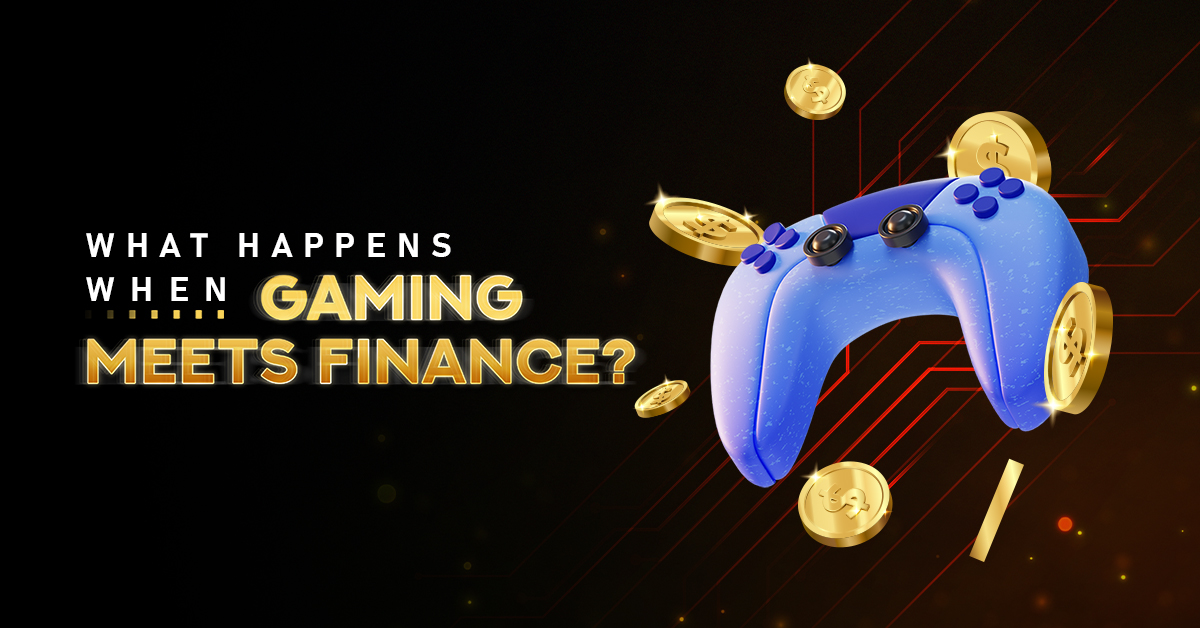Gaming and finance… Never would people have thought about a time when these two aspects considered to be polar opposites would find a parallel and almost-congruent mention. Today, the landscape of gaming has changed, introducing a new portmanteau of gaming and finance called GameFi.
All love stories that have such a happy ending should trace their origins back to something simple, and at times, silly! This union of gaming and finance is not an exception. You perhaps remember the games that you play on your eight-bit television gaming console where you needed to collect coins to get some benefits. Anyway, those “coins” were financial instruments… Just that the benefits were confined to the game. This continued well into casual games like Subway Surfers. The only difference was that in games like Subway Surfers, the “financial” aspect was interwoven with real money.
Although there are some good possibilities that you might know the intricacies, let us take a little time to explain it a bit (no… not the same as the ‘bit’ in the ‘eight-bit’). In the game, you either had to play the game enough, collect coins, and use them as currency to purchase game characters with added powers, game accessories with a special utility, or game skins and attire that would enhance the visual appeal. If, however, you were not ready to spend the time it takes for you to play the game and earn your reward, you could alternatively purchase all those added advantages by using your digital payment instruments.
This has come a long way from the console and computer gaming ecosystems that existed in the first decade of this millennium… And this was a massive paradigm shift for the gaming landscape. It showed the world that people are not only ready to spend time but also ready to spend money on the aspects of gaming that were considered to be quite superficial.
There was an extraordinarily uncanny confluence between game and money… And least expectedly. The money-making mechanism was not inherent to the game but outside the game. The best players of the game could now participate in global tournaments and make money by winning championships. While this cannot be completely called GameFi in the truest sense of how it is known today, it would still represent an avenue of gaming being associated with earning… Something unheard of until that point in time.
The sad-yet-promising transformation that people and especially the gaming community experienced was their inclination to explore possibilities of getting something in return for the time, effort, and money that they spent on the game.
When we are talking about “returns”, we are not just talking about something that happens over investments or something about monetizing activity. We are talking about a holistic combination of everything that would make the game a lucrative affair. This meant that some of the key elements that exist in the gaming ecosystem had to be completely transformed. This led a lot of industry experts to explore different possibilities… And the technical capabilities required to expedite those possibilities.
Be it happenstance or meticulous planning, it turns out that the same technology that powers cryptocurrency could be the game changer for gaming (forgive the tautology!) To understand how distributed ledger technology transformed gaming, it is important to understand the challenges that the world of gaming was facing.
The gaming assets that gamers buy with so much enthusiasm have only a limited validity… And it is controlled by the life of the game. The moment a game is rented obsolete, all the assets go to waste. This meant that gamers consciously brought those assets knowing this possibility, and they would have welcomed a chance of extending the life of those assets beyond the longevity of the game.
This led to the introduction of gaming assets, opening the trend of them being sold as non-fungible tokens or NFTs as they are commonly abbreviated. This is probably one of the key steps in the transformation of the gaming ecosystem and pulling a confluence between finance and gaming. This opens up a lot of constructive implications.
To start with, gaming assets could now be considered investments. In the purest sense, you could buy a gaming asset, increase its value, and sell it on the marketplace at a later point in time, making them a real investment. This meant that gaming assets were no longer a waste of money that only had a limited temporal scope.
The merger of blockchain and gaming has also introduced a new breed of games called P2E games. P2E is the abbreviation for Play-to-earn. This gaming ecosystem is literally what it means. Unlike the earlier ecosystems where the possibility of earning with gaming was outside the inherent elements of the game, people could now earn by just playing the game. The final frontier for merging gaming and finance had ultimately been breached!
GameFi is now an undeniable and inevitable element of the gaming and finance ecosystem. A lot of games have their P2E equivalents, and they have been attracting both the gaming crowd and the gig economy crowd. The taxation patterns and provisions of certain legislation have been modified to accommodate NFTs as valid and dependable financial assets. It would not be an exaggeration to say that very soon, we could expect gaming to become a serious profession congruent with how content creation was once casual but is now a serious and lucrative profession.
it would only be right and accurate to say that while “finance“ is a constant, the factors that influence finance keep varying. Right now, gaming is one of the most adequate and accurate candidates for merging with finance, and it is already gloriously doing so!
